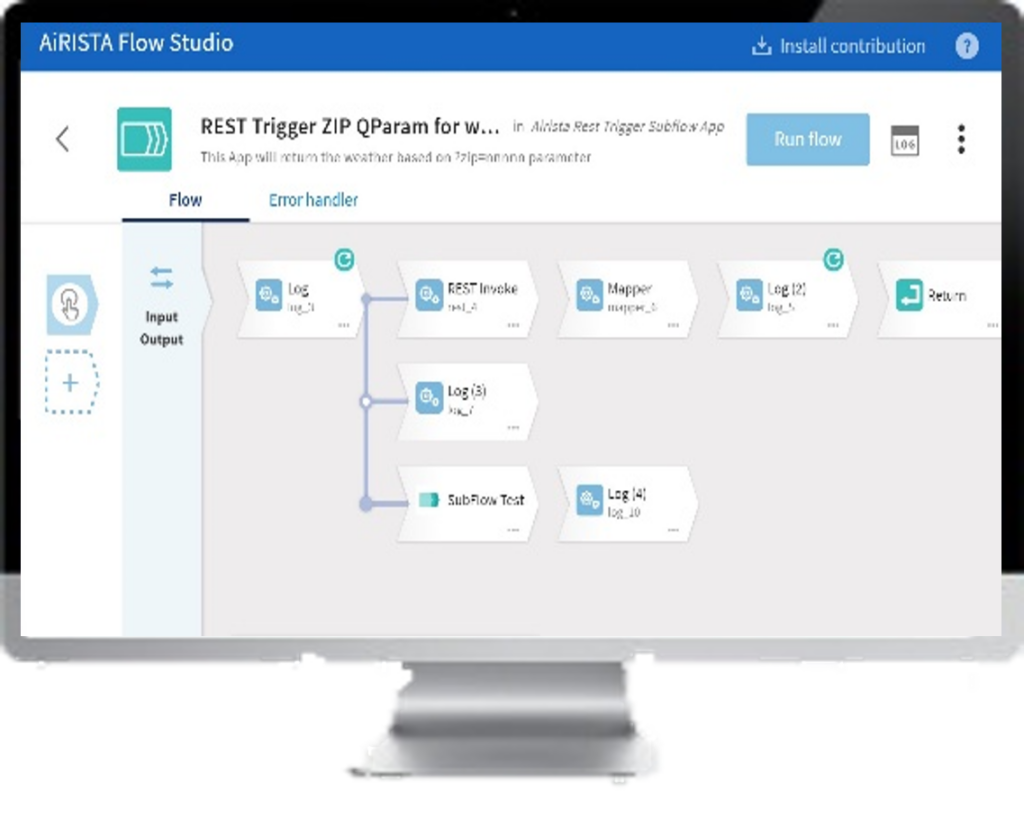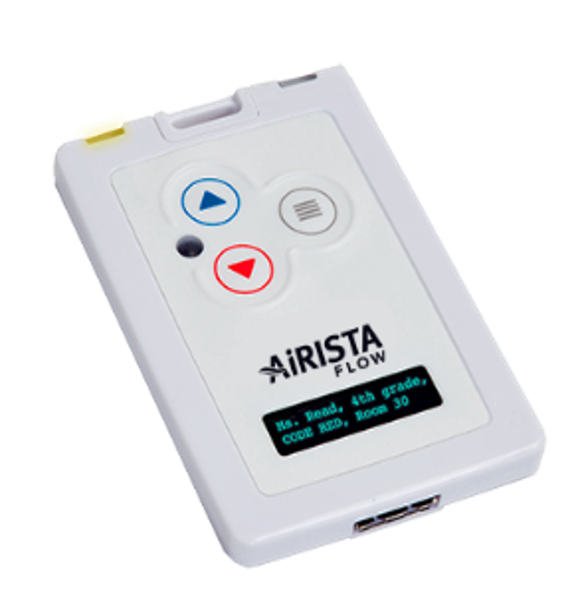Supercharge your IT investments with RTLS location insights
What is RTLS
Real Time Location Solutions (RTLS) track the location of people and assets using battery powered tags. The tags emit a radio signal which is detected by fixed receivers, like access points, to establish a location. The main function of RTLS is to provide accurate and up-to-the-moment information about the location of assets, personnel, or other items in a given environment. This technology finds applications in various industries, including logistics, healthcare, manufacturing, retail, and security. Some common use cases for RTLS include asset tracking, inventory management, personnel tracking, safety and security monitoring, and process optimization.
Extending applications with location insights from RTLS technology
“Track and trace” is a basic RTLS capability that shows a location on a floorplan and a historic path. But this misses a lot of potential value from an RTLS platform available if it is integrated with other devices and applications. According to Gartner, by 2026 90% of Internet of Things (IoT)-enabled devices will be trackable, compared to 20% today. For example, combining location information with other sensors in the environment like video streams allows location events to alert to wayward equipment or contractors. And when shared with applications, location insights increase the value of existing IT investments with real time updates on process flow, equipment maintenance, asset utilization, patient flow, and more. The full advantage is available if the underlying RTLS platform architecture, like AiRISTA’s sofia platform, is extensible to an IOT world.
Approaches to integration
Most RTLS vendors provide well documented APIs for integration. API stands for Application Programming Interface. It is a set of rules and protocols that allows different software applications to communicate with each other. APIs define the methods and data formats that applications can use to request and exchange information. They enable developers to access the functionality of a software application, service, or platform, without needing to understand the internal workings of that system.
The SOAP protocol was developed by Microsoft to facilitate web-oriented services. It uses XML (eXtensible Markup Language) as its message format for communication. While SOAP was widely used in the past for building web services, more lightweight RESTful (Representational State Transfer) APIs have gained popularity in recent years due to their simplicity and flexibility. However, SOAP is still prevalent in enterprise environments, especially where strict standards, security features, and complex transactions are necessary.
RESTful APIs have become widely adopted for their simplicity, scalability, and ease of integration. They are commonly used in web and mobile development to enable communication between different systems or services. Developers interact with REST APIs by making HTTP requests (e.g., using tools like cURL or libraries in programming languages) to specific endpoints, and the server responds with the requested data in a structured format, typically JSON or XML.
Streaming APIs
With more IOT devices coming online, streaming APIs are gaining popularity. Streaming APIs allow for the real-time transmission of data over a network. Unlike traditional REST APIs, which typically involve making a request and receiving a static response, streaming APIs provide a continuous flow of data, allowing applications to consume and process information as it becomes available.
Key characteristics of streaming APIs include:
- Real-Time Data: Streaming APIs deliver data in real-time or near-real-time, allowing applications to receive updates as soon as they are available.
- Continuous Connection: Unlike request-response interactions in traditional APIs, streaming APIs maintain a persistent connection between the client and server. This enables a continuous flow of data without the need for repeated requests.
- Push Model: Data is pushed from the server to the client as soon as it is generated or updated. This push model is in contrast to the pull model used in traditional APIs, where the client has to actively request updates.
- Event-Driven Architecture: Streaming APIs are often based on an event-driven architecture. Clients subscribe to specific events or channels, and they receive updates whenever a relevant event occurs.
- Scalability: Streaming APIs are well-suited for scenarios where scalability and real-time updates are critical, such as social media feeds, financial market data, live sports scores, or IoT (Internet of Things) applications.
At its core, AiRISTA’s sofia RTLS platform communicates internally via streams. Sofia’s stream oriented architecture is inherently capable of consuming, manipulating, and generating streams. Written in the language Go-Lang, sofia is AI-ready and machine learning friendly. As an example, AiRISTA worked with a major access point vendor to implement their MQTT streaming protocol for collection of BLE traffic data. Given the volume of BLE traffic in the environment, a continuous connection was required for scalability and persistence.
RTLS Integration with IOT
SOAP, REST, and streaming APIs provide data exchange. But a distributed and scalable approach to coordinating activity is needed as millions of intelligent devices come online. To construct workflows that orchestrate the activity of people and devices, a microservices architecture is needed that leverages streams for communications according to Forbes. AiRISTA has created a low-code design environment, Flow Studio, that connects microservices on a graphical pallet abstracting the underlying JSON code. Benefits include,

- Lightweight and Fast Execution:
- Designed to be lightweight, making it suitable for resource-constrained environments and edge computing.
- It aims to provide fast execution, which is crucial for event-driven and real-time applications.
- Event-Driven Architecture:
- Flow Studio is built around an event-driven architecture, making it well-suited for scenarios where applications need to react to events or triggers in real-time.
- Visual Programming Model:
- Flow Studio includes a web-based visual programming model that allows developers to design and build integrations using a graphical interface. This can enhance productivity and make it easier to understand complex workflows.
- Extensibility:
- Flow Studio is extensible, allowing developers to add custom functionality or connectors to integrate with various systems and services.
- Microservices Support:
- Supports the development of microservices, enabling the creation of modular and scalable applications.
- Ecosystem of Connectors
- Growing ecosystem of connectors that simplify the integration with a variety of services and protocols. This includes connectors for popular messaging systems, databases, and other APIs.
- Support for Edge Computing:
- Designed to be used in edge computing scenarios, where lightweight and efficient processing is crucial. This makes it suitable for IoT and edge device applications.
With a specific focus on RTLS platform extensibility, AiRISTA is helping customers extract more value from their RTLS investments through integrations. For example, an auto manufacturer replaced handheld scanning of bonnet sheets with wireless identification of vehicles. Integration with the Activeplant MES platform pops build instructions on the associate’s display. A healthcare provider automates the dispatch of porters by integrating requests from a nurse’s mobile device with message delivery to the AiRISTA B4n tag worn by porters for closed loop transport services with measurable metrics. And prison systems control building systems like door locks and sirens in response to an alert from the AiRISTA B4n staff safety tag.

Future trends
Accuracy levels provided by RTLS solutions is now under one meter and with new technology like BLE High Accuracy Distance Measurement (HADM) expected later in 2024 accuracy levels will approach 10s of centimeters. Combined with a flood of IOT devices, new use cases open exciting opportunities to extend even further the value of an RTLS platform.
Increase accuracy and decreasing costs and complexity are opening new markets for RTLS solutions. We are seeing interest in managing the flow of logistics goods from indoors, to outdoors, and back to indoors. With retail, the model is extended to the store floor where costs and infrastructure simplicity is replacing RFID tags with low cost BLE tags and even printed battery-less BLE tags according to the Wall Street Journal. Fan engagement at sports venues provide services such as wayfinding, concession stand promotions, and interactive experiences. And smart cities are using RTLS to optimize public transportation by tracking vehicles, predicting arrival times, and improving overall efficiency.
As technology evolves, RTLS solutions are likely to find applications in even more diverse fields, providing enhanced visibility, efficiency, and safety across various industries.





